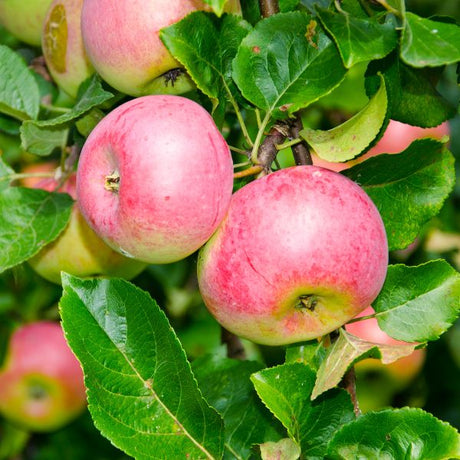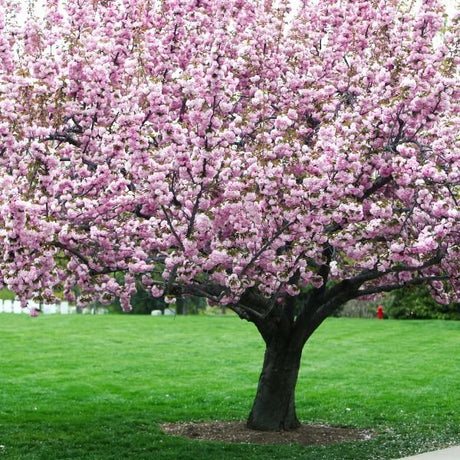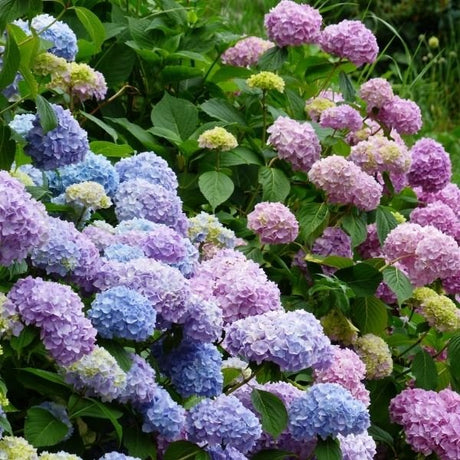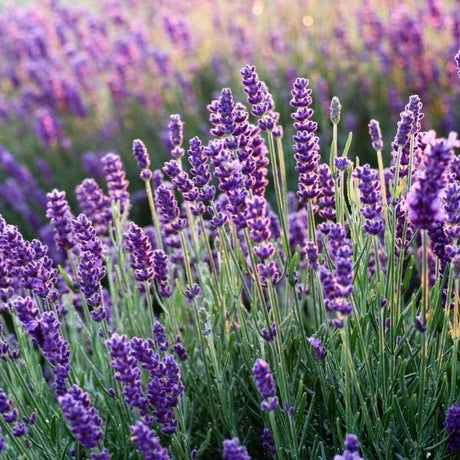Common Chokecherry
Prunus virginiana
- Stay Protected with Plant Sentry ™
Common Chokecherry - #3 Container 2-3 Feet is backordered and will ship as soon as it is back in stock.
Plant Sentry™
Plant Sentry™

Plant Sentry™ Protected
Your order is protected by our compliance system that:
- Prevents restricted plants from shipping to your state
- Ensures plants meet your state's agricultural requirements
- Protects gardens from invasive pests and diseases
Delivery and Shipping
Delivery and Shipping
Delivery and Shipping
Fast, Safe Plant Delivery
Ships in 3-4 business days • Tracking provided • Weather protected
| Under $50 | $9.99 |
| $50 - $99.99 | $14.99 |
| $100 - $149.99 | $16.99 |
| $150+ | $24.99 |
✓ Zone-specific timing • ✓ Professional packaging • ✓ Health guarantee
Understanding Plant Options
Nature Hills offers plants in two main formats:
- Container Plants: Grown in pots with soil, sized by container volume and plant age
- Bare Root Plants: Dormant plants without soil, sized by height measurements
Container Plant Sizes
Container sizes indicate plant age and growing capacity rather than liquid volume equivalents. Our containers follow industry-standard nursery "trade gallon" specifications, which differ from standard liquid gallon measurements.
Young Plants (6 months to 18 months old)
| Container Size | Actual Volume | Metric Equivalent |
|---|---|---|
| 2" x 2" x 3" | 0.18 - 0.21 dry quarts | 0.20 - 0.23 dry liters |
| 4" Container | 0.31 - 0.87 dry quarts | 0.35 - 0.96 dry liters |
| 4.5" Container | 0.65 dry quarts | 0.72 dry liters |
| 6" Container | 1.4 dry quarts | 1.59 dry liters |
| 1 Quart | 1 dry quart | 1.1 dry liters |
| 5.5" Container | 1.89 dry quarts | 2.08 dry liters |
Established Plants (18 months to 2.5 years old)
| Container Size | Actual Volume | Metric Equivalent |
|---|---|---|
| 2 Quart | 2 dry quarts | 2.2 dry liters |
| #1 Container | 2.26 - 3.73 dry quarts | 2.49 - 4.11 dry liters |
| 5" x 5" x 12" | 3.5 - 4.3 dry quarts | 3.85 - 4.74 dry liters |
Mature Plants (2-4 years old)
| Container Size | Actual Volume | Metric Equivalent |
|---|---|---|
| #2 Container | 1.19 - 1.76 dry gallons | 5.24 - 7.75 dry liters |
| #3 Container | 2.15 - 2.76 dry gallons | 8.14 - 12.16 dry liters |
Large Plants (3-5 years old)
| Container Size | Actual Volume | Metric Equivalent |
|---|---|---|
| #5 Container | 2.92 - 4.62 dry gallons | 12.86 - 20.35 dry liters |
| #6 Container | 5.25 - 6.01 dry gallons | 23.12 - 26.42 dry liters |
| #7 Container | 5.98 - 6.53 dry gallons | 26.34 - 28.76 dry liters |
Bare Root Plants
Bare root plants are sold by height from the root system to the top of the plant. Plants may exceed minimum height requirements.
Common Sizes:
- Trees: 1 foot, 2 feet, 3 feet, 4 feet, 5 feet, 6 feet
- Shrubs & Perennials: 1 foot, 18 inches, 2 feet
Important Notes
Container Volume Specifications
- Trade Gallon Standard: Our containers follow industry-standard "trade gallon" specifications established by the American National Standards Institute (ANSI Z60.1) for nursery stock
- Volume Variations: Actual soil volume may vary due to plant root systems and growing medium settlement
- Age Indicators: Container size primarily indicates plant age and maturity rather than liquid volume equivalents
Growing Conditions
- Plant size can vary based on variety and growing conditions
- Container size helps indicate plant maturity and establishment level
- Larger containers generally mean more established root systems and faster landscape establishment
Seasonal Availability
- Bare root plants are available seasonally when dormant
- Container plants are available throughout the growing season
- Specific varieties may have limited availability in certain sizes
Questions?
For questions about specific plant sizes or availability, please contact our plant experts who can help you choose the right size for your landscape needs.
Plant Highlights
Common Chokecherry highlights at a glance!
Specifications
Specifications
-
Brand
-
Botanical Name
-
Growing Zones
-
Mature Height
-
Mature Spread
-
Sun ExposureFull Sun, Partial Shade
-
Moisture
-
Soil
-
Growth RateMedium
-
Flower Color
-
Fall Color
-
Pollinator Friendly
-
Pollinator Required
-
Fragrant
-
Pruning Time
-
Bloom PeriodEarly Spring, Late Spring
-
Harvest Time
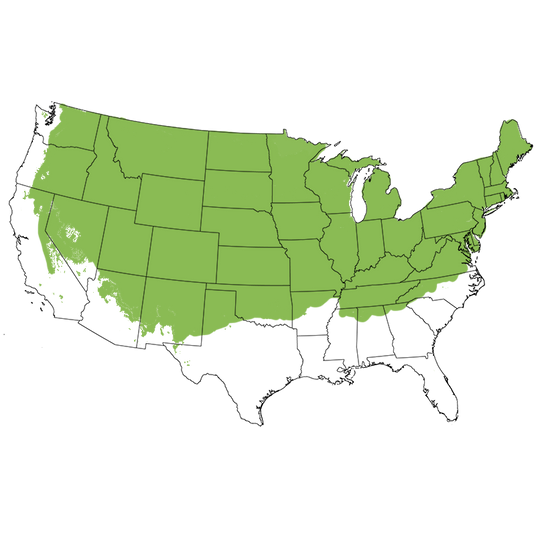
Growing Zones 2 - 7
The delightful and hardy native shrub with a world of perks, the Common Chokecherry Bush (Prunus virginiana) is an extremely hardy flowering edible ornamental shrub! A wonderful wildlife plant, Chokecherry are related to Cherry trees, Plums, Apricots, and Peaches, and the fragrant blooms provide nectar and shelter for butterflies, birds, and chipmunks!
Remarkably beautiful every season, spring's white fragrant blossoms are a boon to beneficial insects and the finely-toothed, shiny leaves emerge bright green after the flowers bloom.
In late summer, tiny and tart, dark purple Chokecherries develop and decorate the shrub in long, drooping clusters, creating a showy ornamental display! These fall color shrubs deepen and take on warm orange and reddish-purple tones before the leaves drop before winter.
Also known as Bitter-Berry, Chokecherry, Virginia Bird Cherry, and Western Chokecherry, these deciduous native shrubs have a pyramidal to oval habit, the uniform canopy and branching look amazing with a covering of white snow. Incredibly cold-hardy throughout USDA planting zones 2 through 7. Despite being considered shrubs, these large shrubs can reach 20-30 feet in height and 15-20 feet in width.
Planting and Application:
The dark purple-red cherries, once a staple of Native Americans and settlers, can be used for jam and wine (removing the seeds first). Bitter enough to make you 'choke' these need plenty of sweeteners when used for your baked goods and desserts.
Fortunately, birds don't have taste buds and absolutely adore Chokecherries and at least 70 species of songbirds (both local and migrating) feast on the fruit. Wonderful bird-friendly backdrops, or informal hedges along your property line, garage, or outbuildings.
Chokecherry bushes grace your patio plantings or are ideal when repeated along the length of your mixed shrub border. Use en masse as hedgerows, windbreaks, and shelterbelts to boost the visual appeal. They're a nice choice to add to a permaculture setting or wildlife landscape. Mix and match with Chokeberry Aronia, Elderberry, Currant bushes, and Sand Cherry bushes for a wonderful mixed edible landscaping fruit buffet in your own backyard!
These large shrubs are wonderful screening, forming naturalized thickets and hedges with ease. It's easy to create a beautiful specimen tree with a little selective pruning. You can 'limb-up' these shrubs to create smaller tree forms by removing the lower limbs and exposing the multi-stemmed canopy.
- Fragrant White Spring Flowers for Pollinators
- Large Shrub or Small Tree
- Four-Seasons of Interest!
- Bee & Butterfly Friendly & Bird & Wildlife Food/Shelter
- Hedges, Shelterbelts, Screening, En Masse & Tree-Form Specimens!
#ProPlantTips for Care:
Get the most berries and best growth by planting your Chokecherry in full sun. Chokecherry are waterwise shrubs and adaptable to a variety of conditions and extreme cold. These tough native shrubs even tolerate poor soils, they do require very well-drained soil and regular moisture through the summer fruiting season.
Provide a well-drained moderately moist site with Nature Hills Root Booster and a healthy layer of arborist bark chips. Clean-up is easy since the first freeze causes all the foliage to drop, but not until you get to enjoy the yellow fall color. Prune for size and shape after flowering, and you can remove the suckers easily to maintain a tidy clump or a multi-stemmed tree form. You can also use renewal pruning to remove older, less vigorous stems and encourage younger, more fruitful stems to take their place. Remove no more than a third of the branching every 3-5 years.
- Cold Hardy in Full Sun & Part Sun
- Adaptable to Most Well-Drained Soil Types
- Regular to Low Moisture Needs
- Drought Tolerant & Tolerates Poor, Dry Conditions
- Prune After Flowering
The Common Chokecherry Tree has it all! Four seasons of beauty - fragrant white flowers for pollinators, lush colorful foliage, and fall color, plus edible berries for you and wildlife! Order yours today at NatureHills.com!



